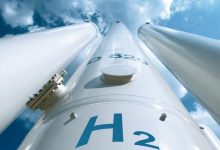A new deep drive analysis of the emerging green hydrogen industry has found that without government support, the supply of zero emissions hydrogen may not be able to keep pace with surging demand, but transport costs are looming as a particularly tough barrier to establishing a thriving export market.
The findings have been published in a new report by the Institute for Energy Economics and Financial Analysis (IEEFA), which found that despite a rapid increase in green hydrogen globally it won’t be enough to meet the surging global demand for zero emissions hydrogen.
IEEFA found that Australia already ranks amongst the global leaders in a green hydrogen industry, with a number of projects advancing rapidly towards deployment, as well as a number of pilot projects already underway.
The IEEFA report estimates that there are around 50 major green hydrogen projects under development globally, with the ability to supply up to 3 million tonnes per year. However, future global demand has been forecast to reach as high as 8.7 million tonnes per year by 2030.
“Asia, Europe and Australia are backing the majority of new green hydrogen projects,” IEEFA analyst and report author Yong Por said.
“The European Union is also a heavy lifter in the new global technology race, with green hydrogen projects backed by improving economics, falling renewable costs, the option to produce hydrogen on-site economically, and existing gas pipelines which can be used for transport to meet local demand.”
“However, many of the 50 newly announced green hydrogen projects could face delays due to uncertain financing, cumbersome joint venture structures, and unfavourable seaborne trade economics,” Por added. “More public-private efforts are necessary for green hydrogen supply to overcome apparent obstacles.”
Australia has a number of smaller-scale demonstration projects in development, which are looking to produce green hydrogen for use in mains gas networks, through the blending of hydrogen with natural gas supplies, and the use of hydrogen in transport.
However, the IEEFA report found the costs of preparing hydrogen for export remain a substantial barrier to a much larger expansion of green hydrogen production, as the cost of liquefaction remains high and significant reductions will be needed if the direct export of Australian hydrogen is to become economically viable.
IEEFA suggested that public funding will be necessary to achieve necessary cost reductions in hydrogen compression, storage, pipelines and the establishment of liquefaction plants. Additionally, the cost of seaborne transport of hydrogen fuels must also be substantially reduced – this represents a particularly relevant consideration for the Australian market.
It is an issue that has been previously flagged by economist Ross Garnaut, who has suggested that Australia may be better off using locally produced hydrogen to drive the decarbonisation of local manufacturing, including steel production, rather than seeking a costly path of exporting hydrogen directly.
“It will be much more expensive to convert renewable energy into hydrogen, and then convert hydrogen into a tradable form, and then use it for reducing Australian iron oxide into iron metal in China, Korea and Japan, than it will be to do those early stages in Australia and take the iron metal to East Asia,” Garnaut told a Clean Energy Council event in July.
However, given Australia’s established fossil gas export industry, Australia is likely to be better placed than other countries to pursue the green hydrogen export path, taking advantage of existing infrastructure and trade linkages with international energy markets.
IEEFA said that it was crucial that governments supported investment in new hydrogen infrastructure, particularly in capital intensive processing and transport infrastructure, to help achieve greater a economy of scale and increased production output.
“Governments need to urgently back this industry by developing policy settings encouraging private industry to invest the much needed capital, given the industry must ‘learn by doing’,” Por said.
“There remains ample room for more hydrogen projects to meet global demand and further policy support will be necessary to grow this nascent industry. This is the next global technology race.”
The report highlighted two major hydrogen projects being developed in Australia, including the massive Asian Renewable Energy Hub, which is looking to pair a 1GW electrolyser with 15GW of wind and solar capacity that will also be used to export electricity into the Asian region.
The report also considered the Arrowsmith green hydrogen project, currently being pursued in Western Australia by Infinite Blue Energy, which would produce green hydrogen through the use of zero emissions electricity from 85MW of solar and 75MW of wind generation built to supply the project.










